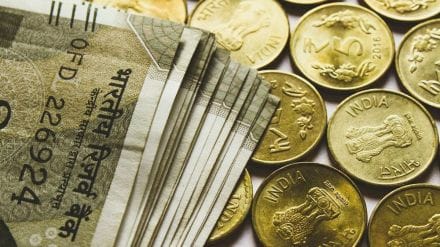Finance Minister Nirmala Sitharaman, during her interim Budget speech in February, said that the Union government has raised the capital expenditure target by 11.1% to Rs 11.11 lakh crore for the next fiscal year starting April 1. This would be 3.4 per cent of the GDP.
Let’s begin this article by understanding the concepts of capital expenditure, effective capital expenditure as well as grants-in-aid for the creation of capital assets.
Effective Capital Expenditure
Effective Capital Expenditure refers to government spending on investments that create long-term assets or infrastructure, contributing to economic growth. This includes funds used for building roads, schools, hospitals, and other essential facilities that benefit society over many years.
For instance, if a government allocates Rs 1,000 crore to build new schools and hospitals, it enhances the education and healthcare infrastructure, benefiting citizens for decades. Such investments are crucial for improving living standards and boosting economic productivity.
Capital Expenditure
Capital Expenditure encompasses all government spending aimed at acquiring or improving physical assets and infrastructure. It includes both effective capital expenditure and other investments like machinery, equipment, and land acquisitions that enhance public services and facilities.
Say for instance, if a government spends Rs 500 crore to purchase new machinery for factories or equipment for public transport, it increases productivity and enhances service delivery, directly impacting economic activities and quality of life.
Grants-in-Aid
Grant-in-aid for the creation of capital assets refers to financial assistance provided by the government to entities such as state governments, local bodies, or organizations for the purpose of constructing or acquiring physical infrastructure and other capital assets. These grants are typically disbursed to support projects that contribute to public welfare, economic development, and community enhancement.
For example, if a central government allocates Rs 200 crore to a state for improving healthcare facilities or implementing a rural development project, it helps address local needs and promotes equitable growth.
Government spending plays a crucial role in shaping a country’s economic growth and development. The flourish chart provided offers insights into three key indicators: Effective Capital Expenditure, Capital Expenditure, and Grants-in-Aid for the creation of capital assets, spanning from 2013-14 to the present.
Capital Expenditure over the years
Here’s where the capex and effective capex stood from 2016-17 to the FY25.
| Year | Capex (in lakh crore) | Effective capex (in lakh crore) |
| 2016-17 | 2.8 | 4.5 |
| 2017-18 | 2.6 | 4.5 |
| 2018-19 | 3.1 | 5 |
| 2019-20 | 3.4 | 5.2 |
| 2020-21 | 4.1 | 6.4 |
| 2021-22 | 5.9 | 8.4 |
| 2022-23 | 7.4 | 10.5 |
| 2023-24 (Revised estimates) | 9.5 | 12.7 |
| 2024-25 (Budget estimates) | 11.1 | 15 |
The trends of grant-in-aid for creation of capital assets stood at 1.7 lakh crore from 2016-17, from 2017-18 to 2019-20 it stood at 1.9 lakh crore.
From 2020-21 it stood at 2.3 lakh crore and in 2021-22 it stood at 2.4 lakh crore and in 2022-23 it stood at 3.1 lakh crore.
The revised estimates 2023-24 for grant-in-aid for creation of capital assets stood at 3.2 lakh crore and Budget Estimates for 2024-25 stood at 3.9 lakh crore.
